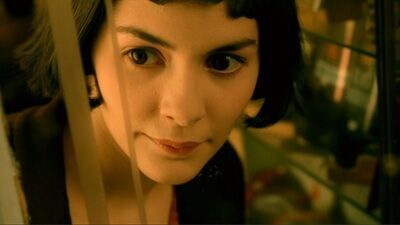No, but every day you find some other ideas, of course.
Do fans still send you photos of gnomes in different parts of the world?
No, but today I received a photograph from a butcher in India or China watching “Amélie” [at work]. Two or three years ago, they [held] a screening in Cannes on the beach for free. They warned me, “It’s a rainy day, we will have 50 people” — no, it was packed. It continues — it never stopped. At the cafe in “Amélie,” every four minutes [someone takes] a picture.
Amélie talks about how much she loves turning around in the theater to see all the faces looking up at the screen. Are you the same way?
I did that. With my short film, I was in a film festival, and I turned my head — everyone was smiling. It was a great moment.
Was that the first time you did that?
I don’t remember. I am very good [at keeping] the good memories — I have a very bad memory, except for the good things.

That seems like a great power to have.
Except “Amélie,” which was very easy, usually [making movies] is a nightmare. The last one, “T.S. Spivet,” was a nightmare — 10 years after, you remember just the good memories. You forget the bad things.
It’s luck — maybe it’s me, I don’t know. I love to rewatch my own movies. Every director [says], “I never watch my own movies” — oh, I do.
Yeah, so many artists only see the mistakes or the things they wish they could redo. How do you explain your ability to just sit back and enjoy your own work?
When I see [my] film, it’s like when you watch a film from vacation: “Oh, I remember it was good to do that.” I love so much to make — this is the most important thing for me. Even when I don’t make a film, I have here in Provence a workshop, and I make something with my hands. I don’t know to draw, I don’t know to make sculptures, but I make some animals and I make an animation short film with that.

